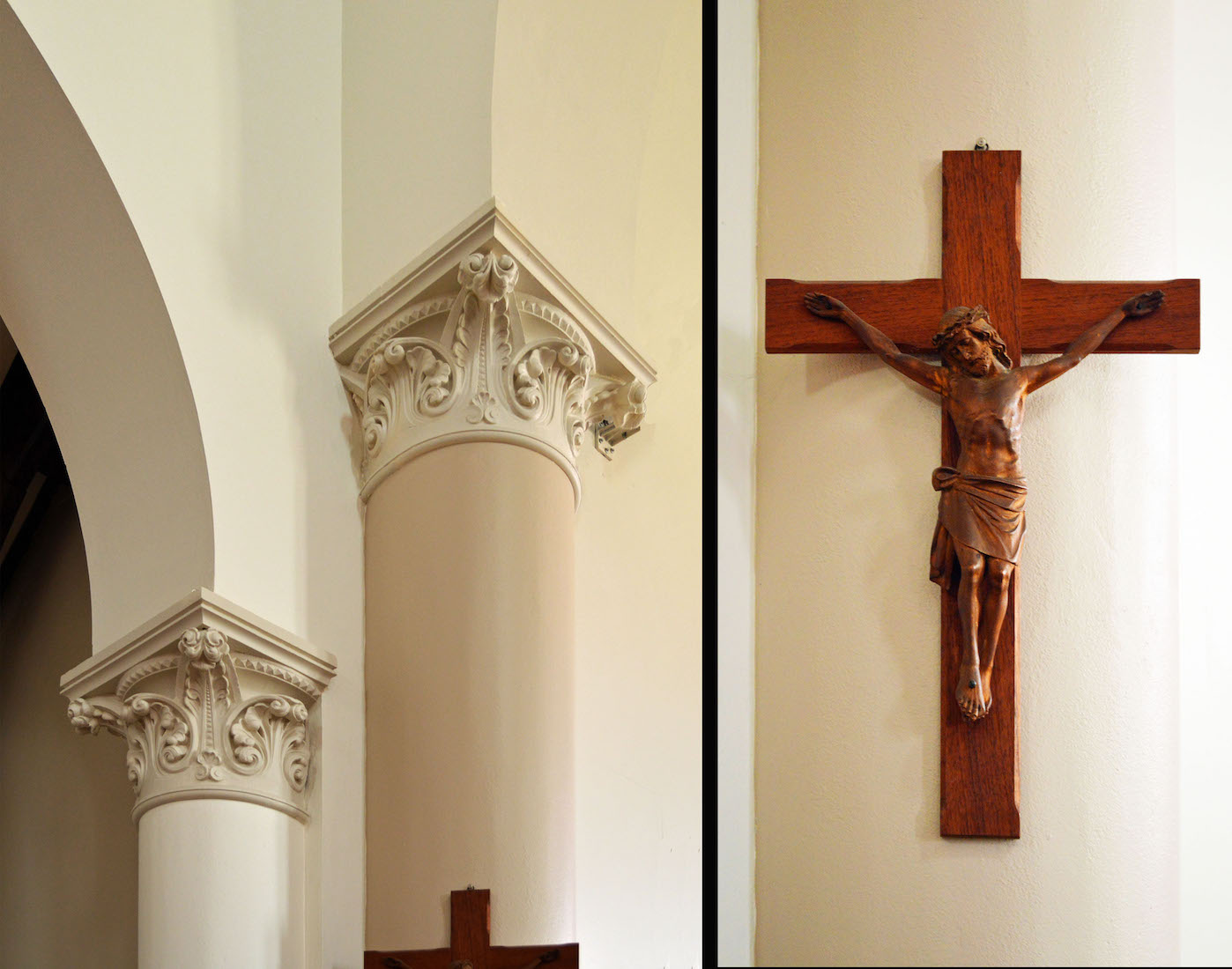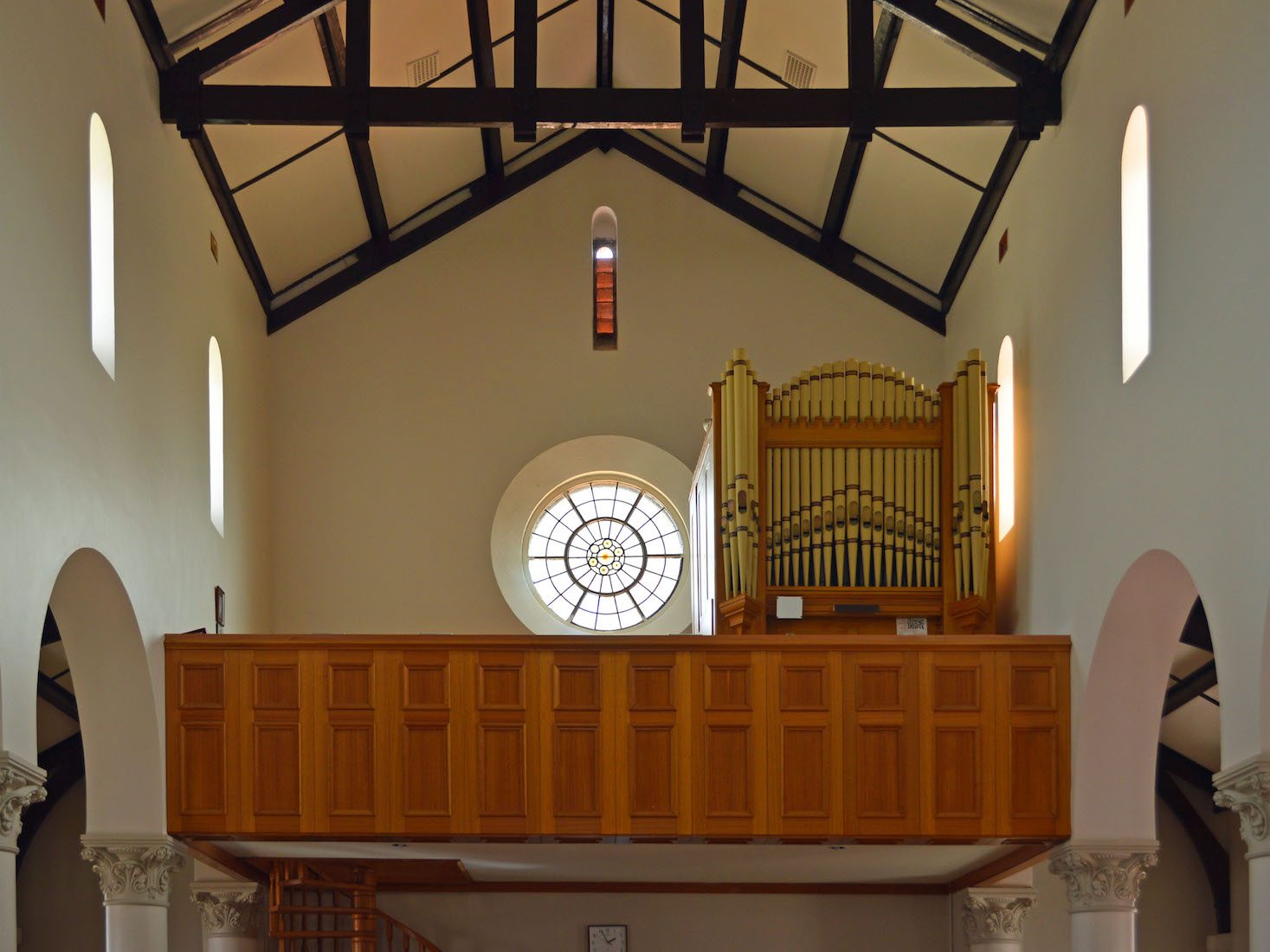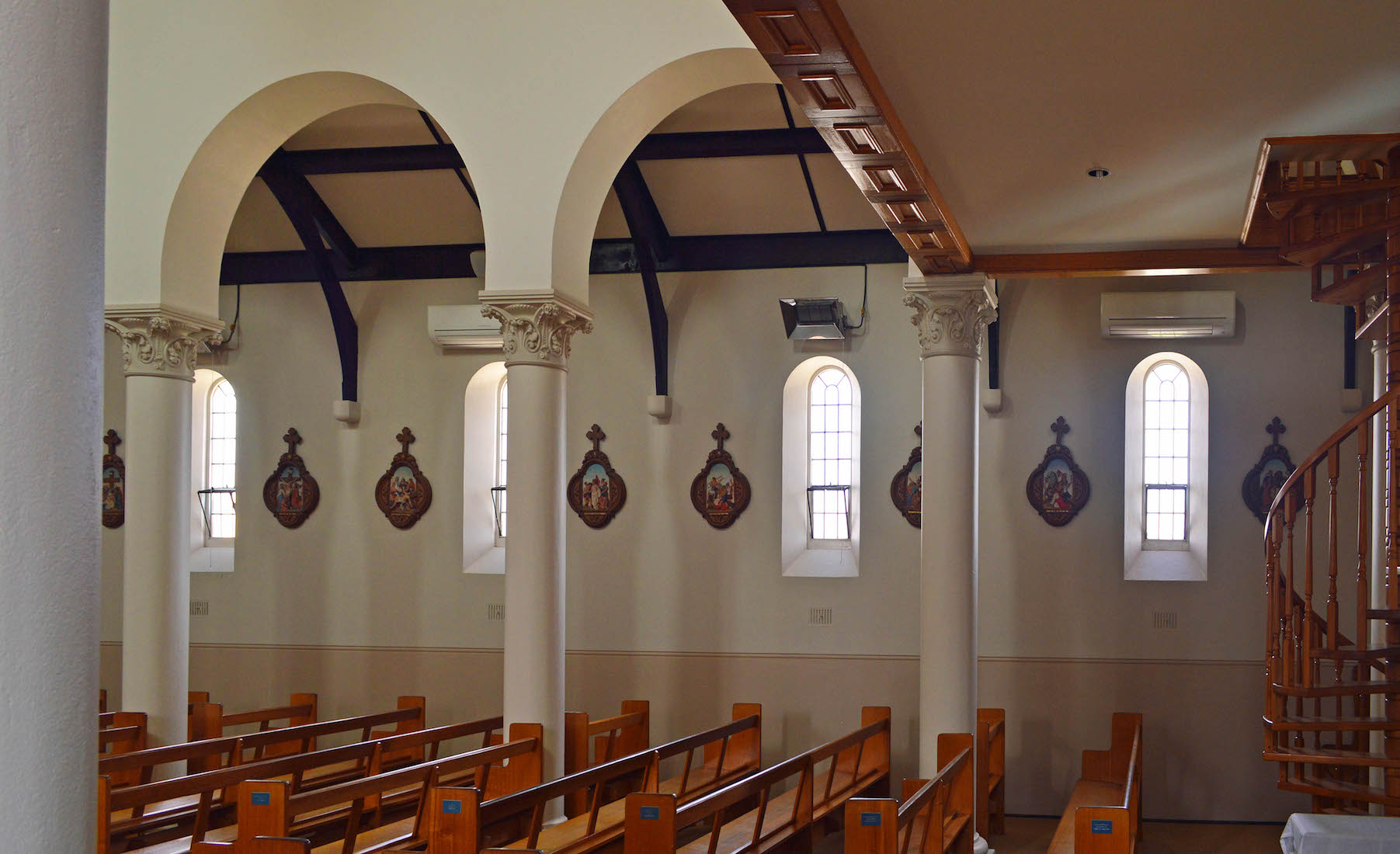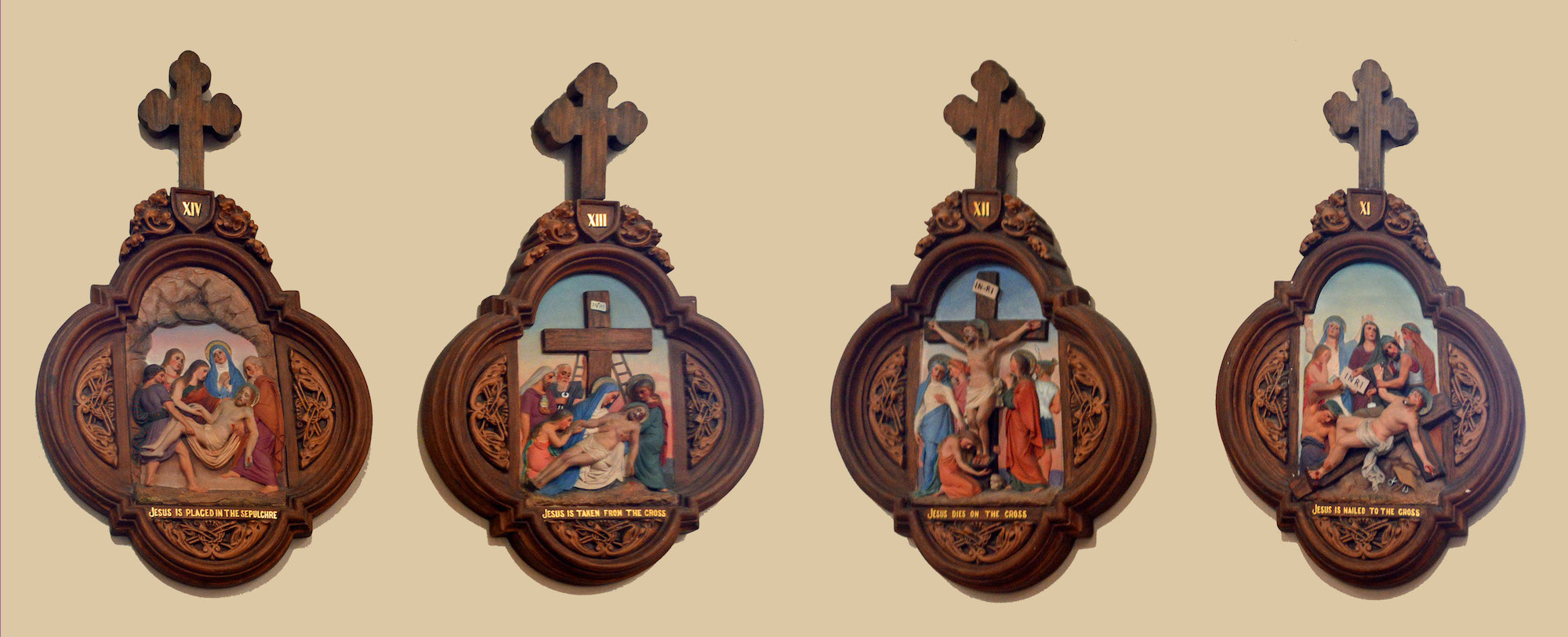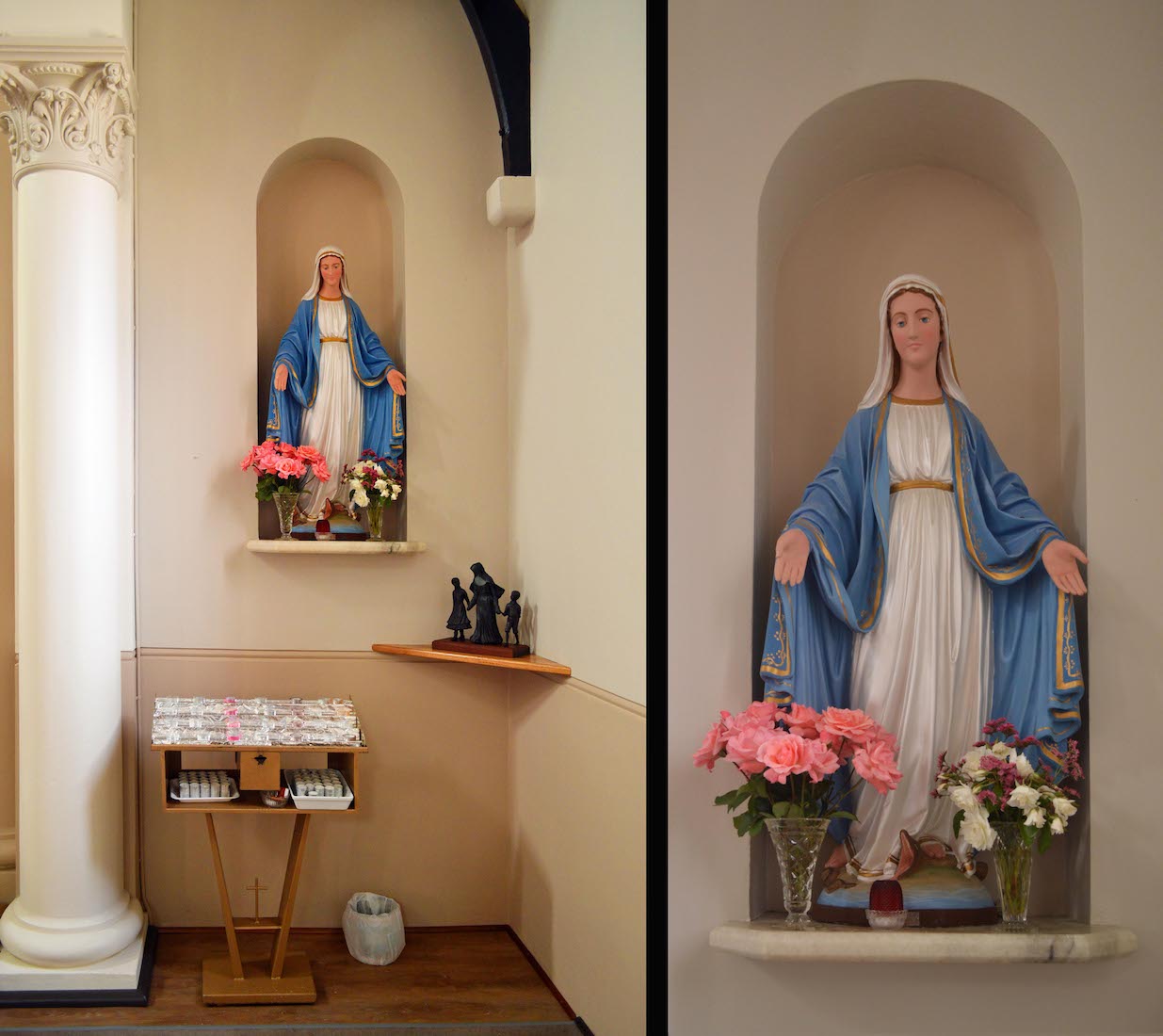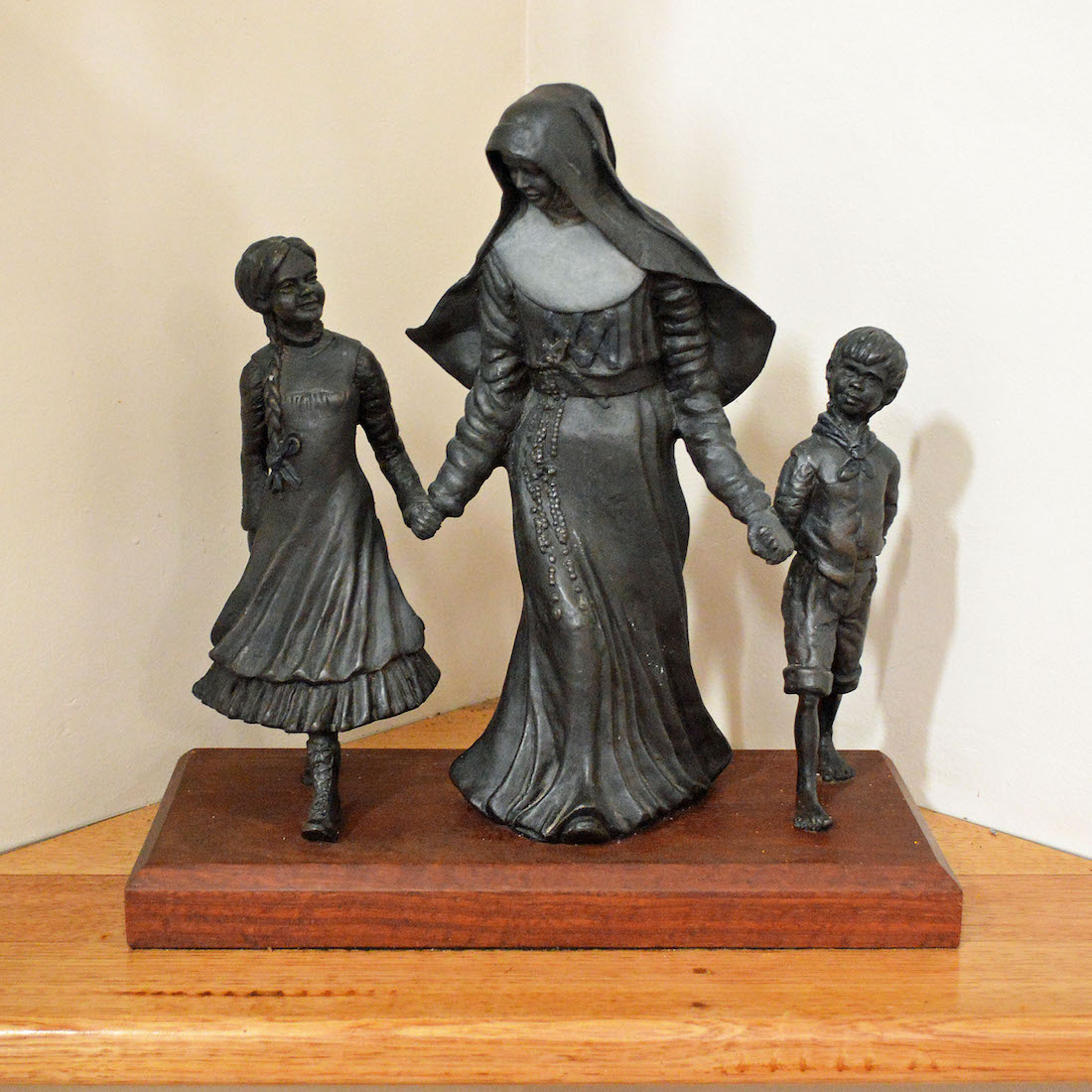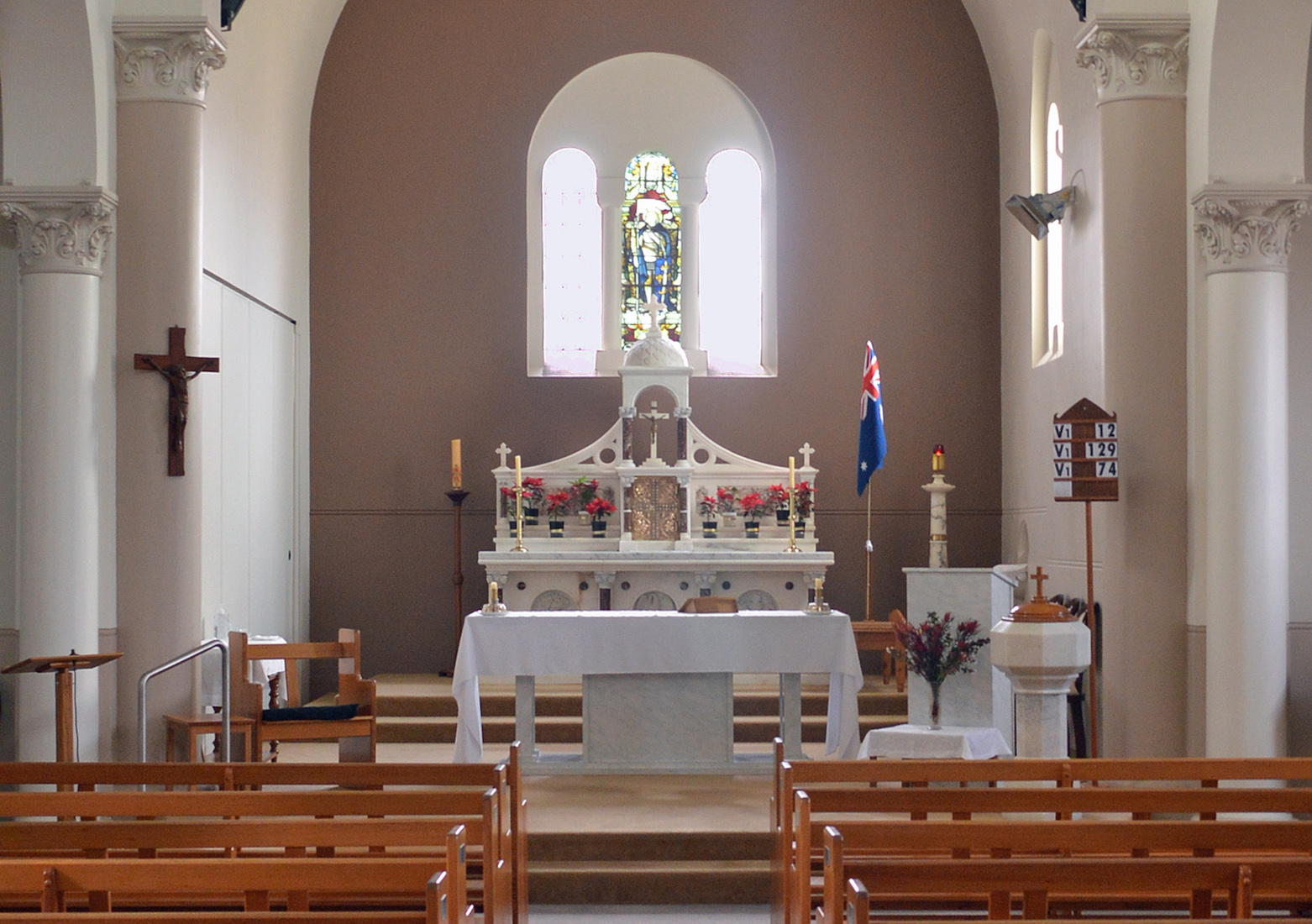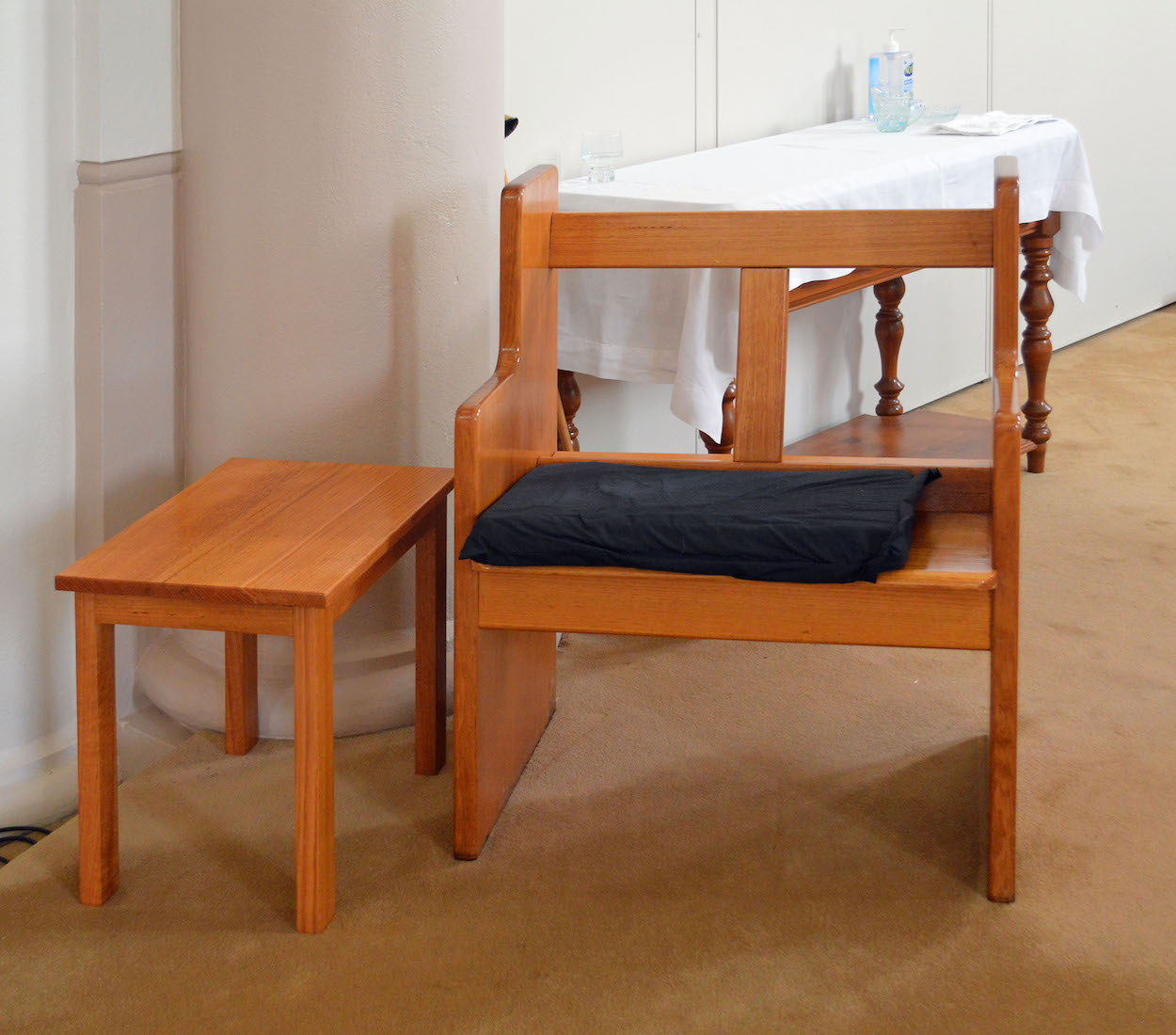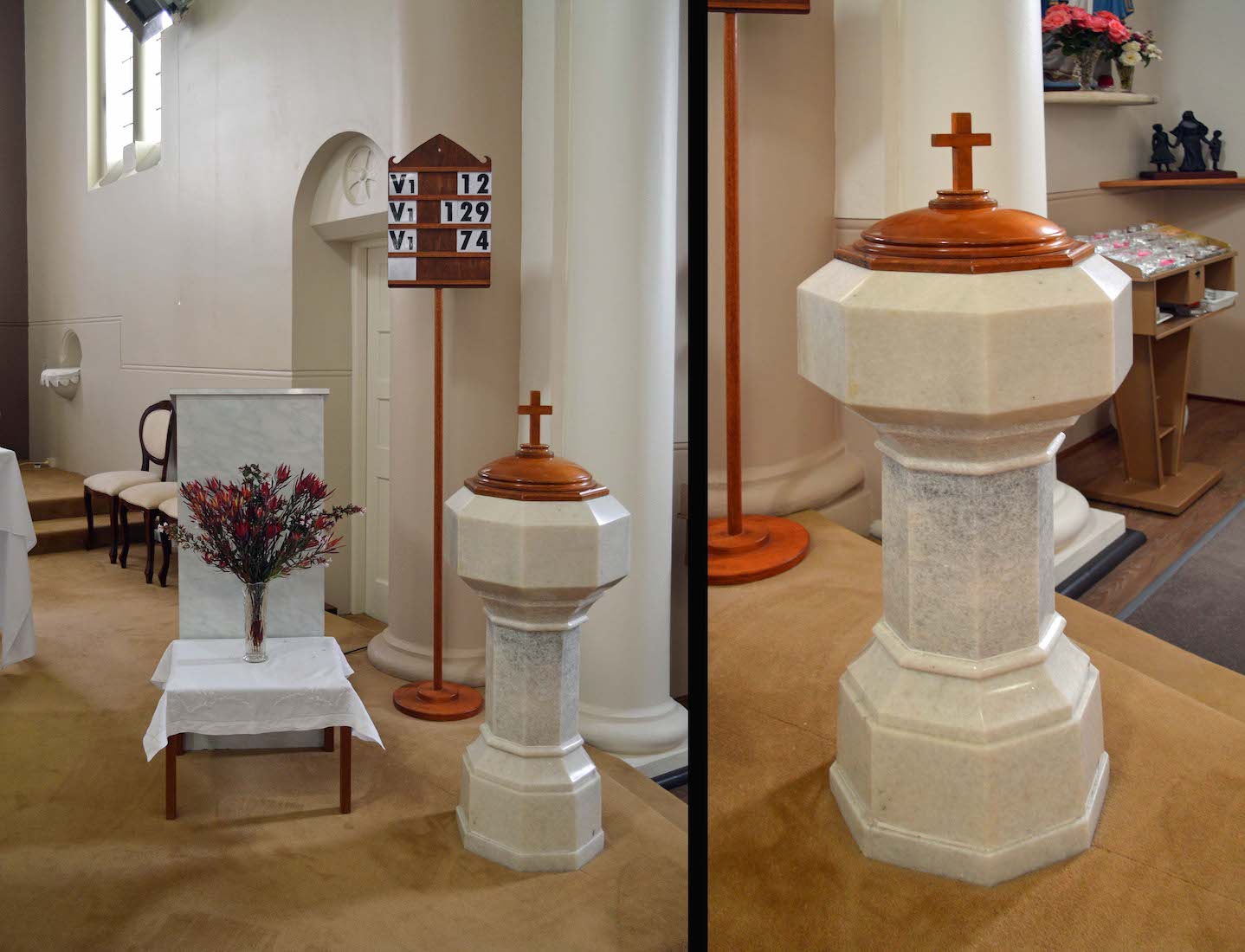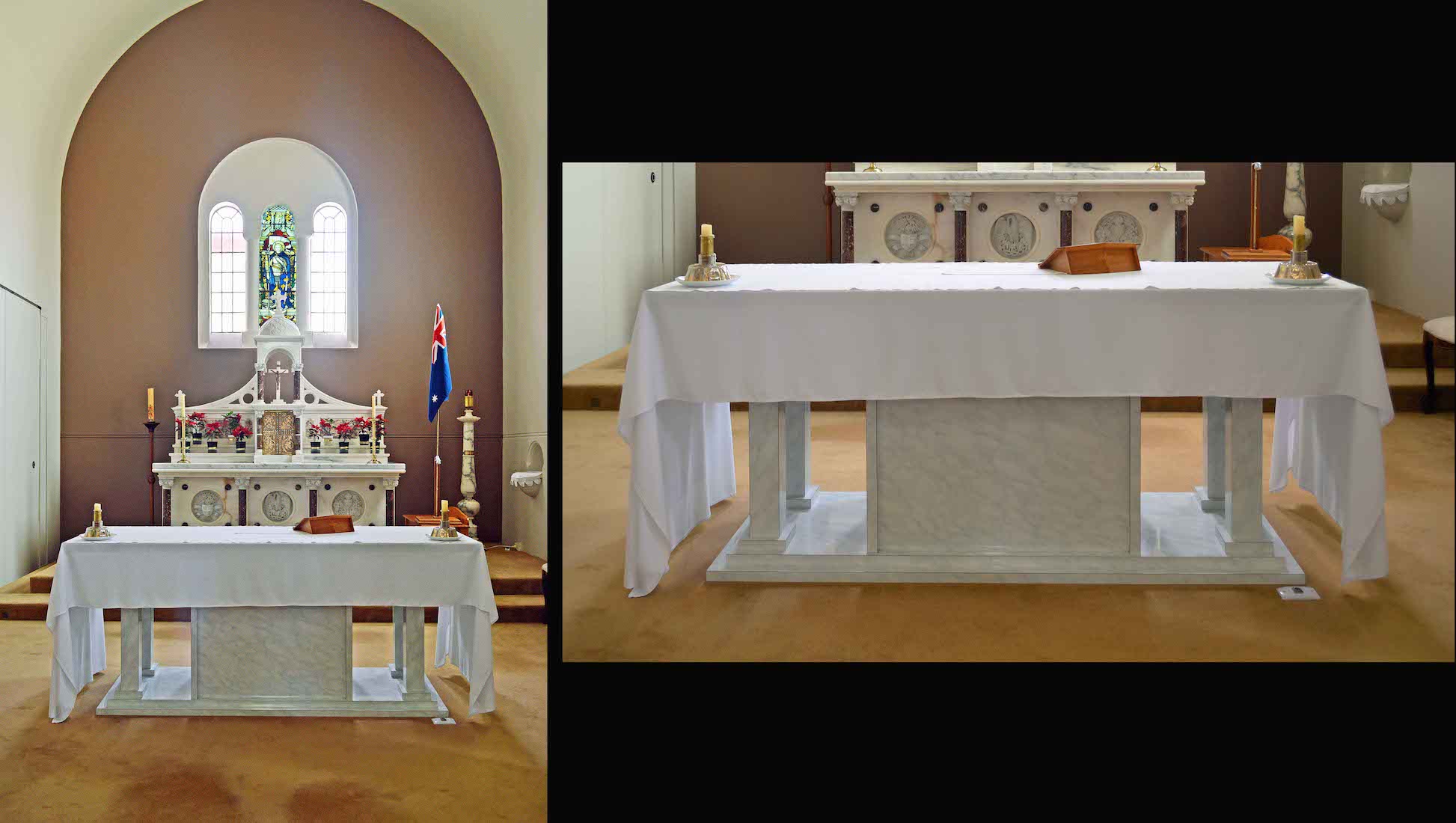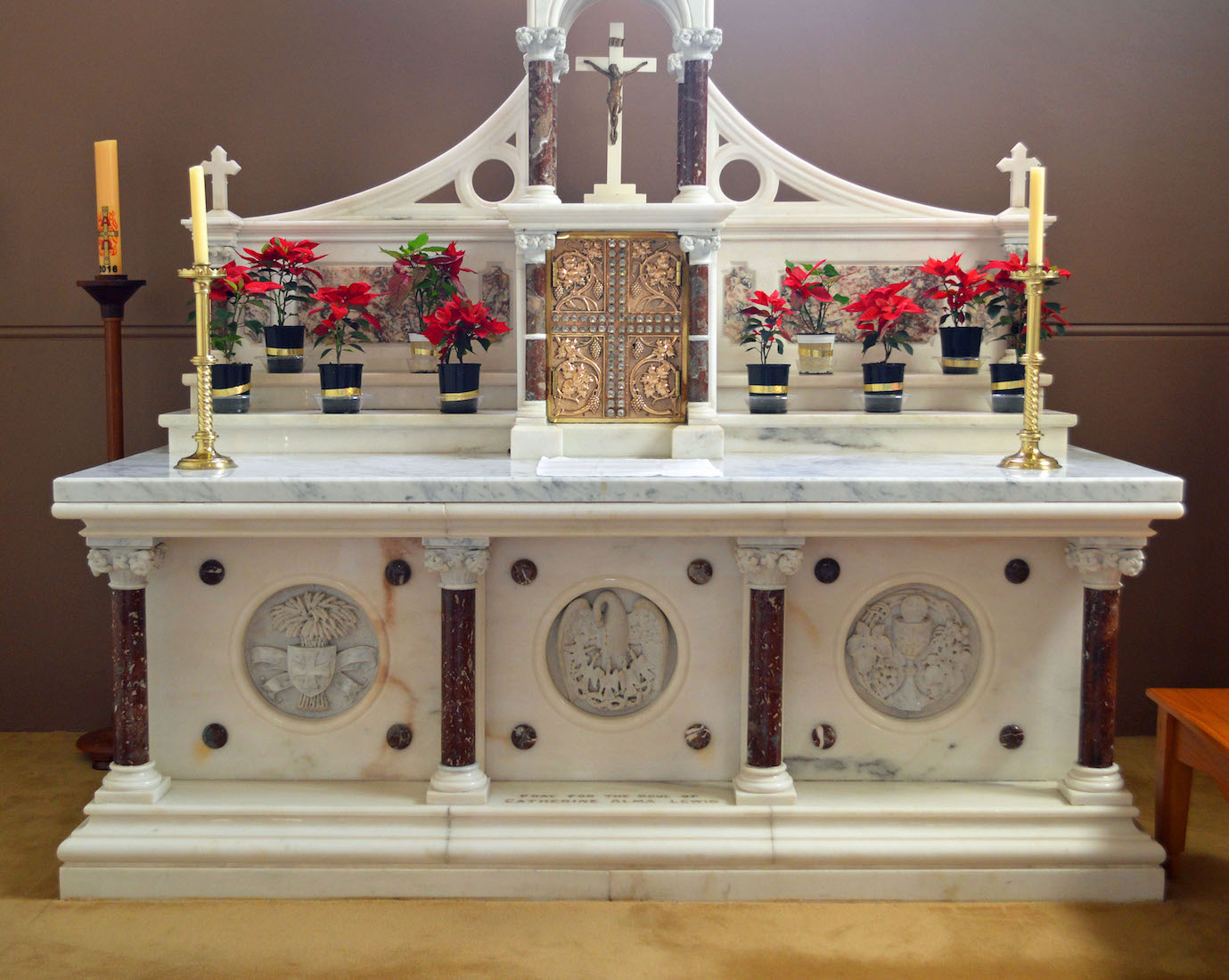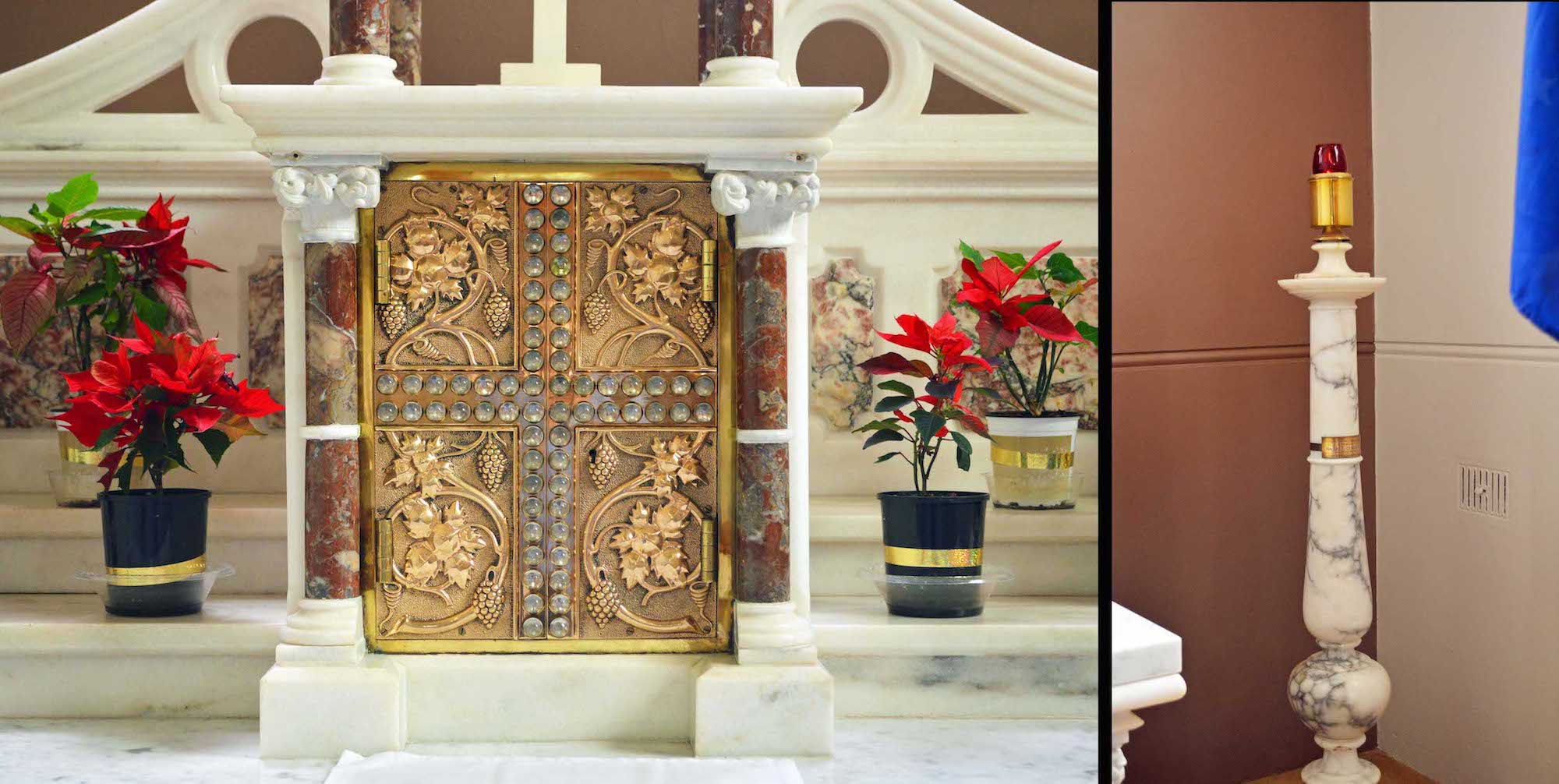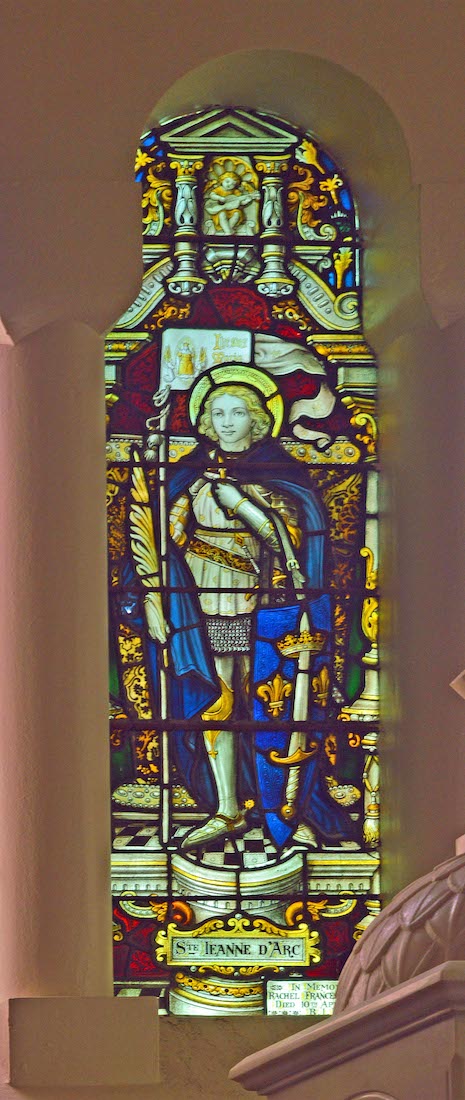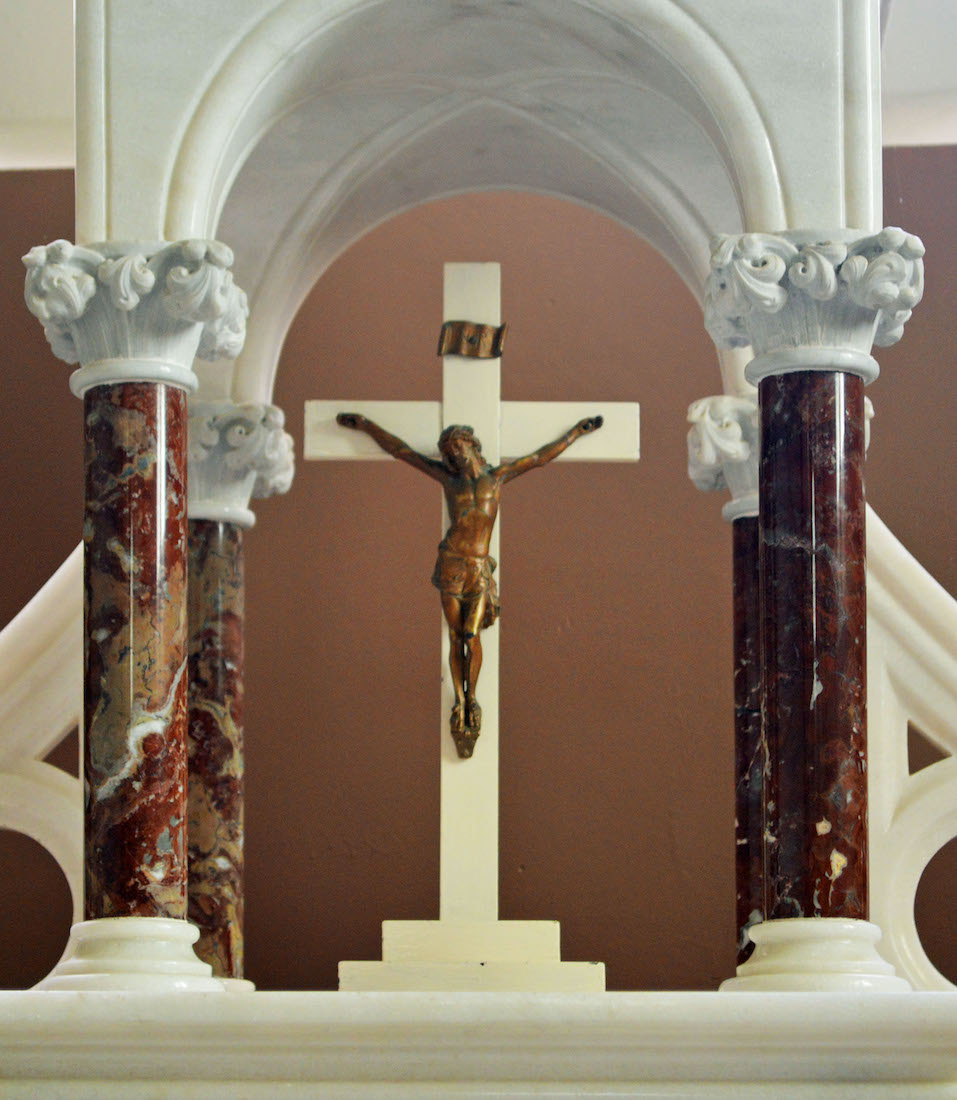
The Stations of the Cross were given by the parishioners of the Church. The Stations are a devotional aid which trace the events experienced by Jesus on his final journey to the Cross. In these first five, Jesus is condemned, he takes up the cross, falls, meets his mother, and is assisted by Simon the Cyrenean. INDEX
22. JOSEPH AND CHILD
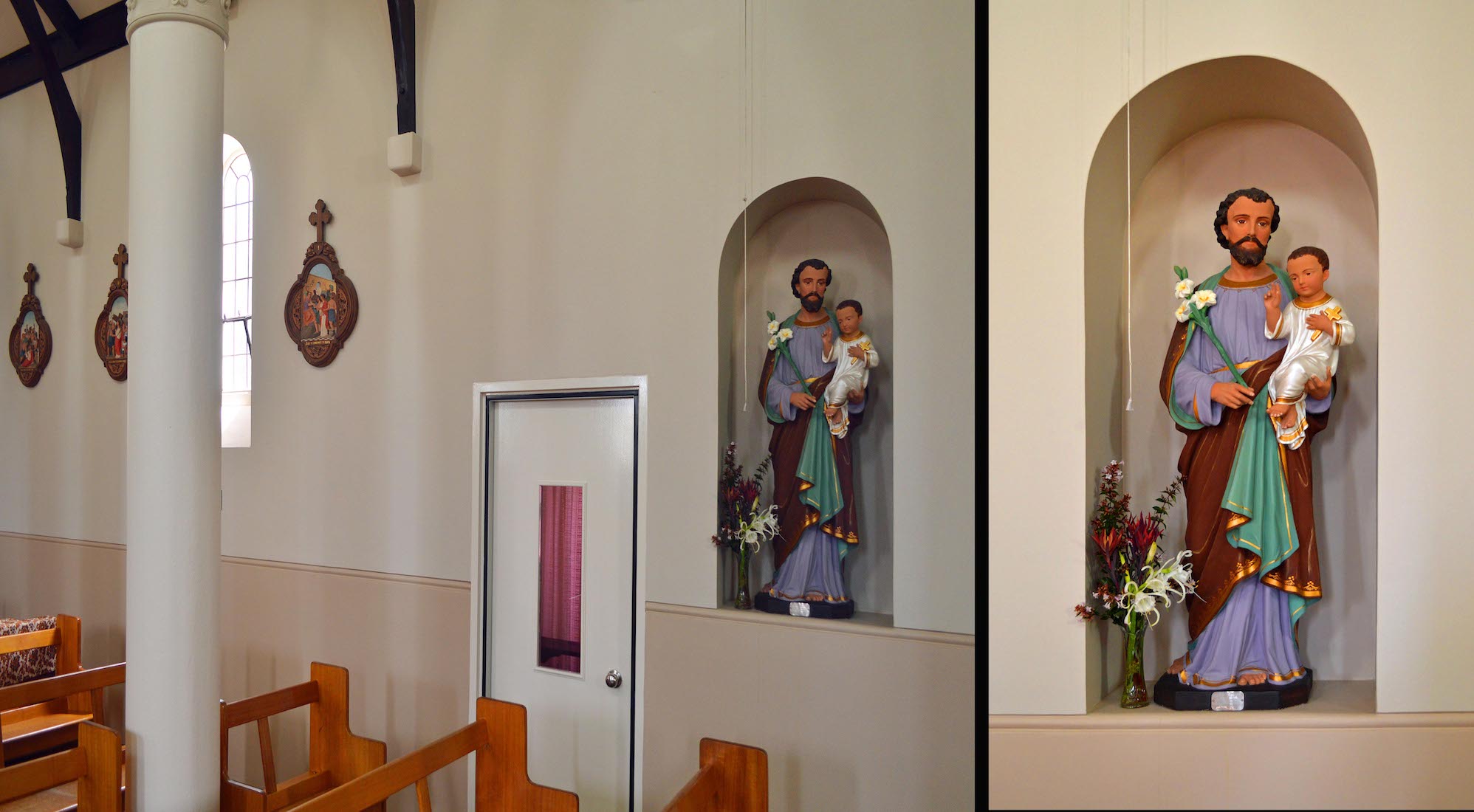
At the Eastern end of the North nave wall there is a wall niche containing a statue of Joseph carrying the infant Jesus. Joseph is invariably identified by a sprig of lilies which he carries. This refers to an old legend about his staff budding as a sign of the forthcoming birth of Christ.
23. CAPITALS AND CRUCIFIX
I rather like the ornate capitals atop the smooth round columns – they form a pleasing contrast. The crucifix was a gift of Mr and Mrs J. Virgin. Almost always, the figure of Christ on the Cross is shown turned to the right. There seems to be no explanation for this.
24. WEST BALCONY AND ORGAN
As we cross the nave, we turn to look at the West wall. Prominently placed is the rose window – a simple structure with a ring of small circles at the centre. The organ at right was originally in the Church of the Epiphany at Crafers. From there it was moved to the new St David’s Church on Glynburn Road at its opening in 1963. Since 1986 it has served the St Joan of Arc Catholic Church.
25. SOUTH NAVE WALL
The South nave wall is much like the North wall with windows and pairs of Stations of the Cross alternating.
26. STATIONS X – VI
In these Stations, key events are Veronica wiping the face of Jesus, and Jesus speaking to the women of Jerusalem. According to Church tradition, Veronica was moved with pity when she saw Jesus carrying his cross and gave him her veil that he might wipe his forehead. Jesus accepted the offering, held it to his face, and then handed it back to her – the image of his face miraculously impressed upon it. This piece of cloth became known as the Veil of Veronica.
27. STATIONS XIV – XI
In these final scenes, Jesus is nailed to the Cross, crucified, taken down from the Cross, and placed in the sepulchre. Sometimes, (but not here), a fifteenth Station is added depicting the Resurrection of Christ, thus completing the story.
29. ST MARY MCKILLOP
Near the Lady Chapel is this delightful little sculpture of St Mary of the Cross with two small children. This is a miniature of the sculpture standing alongside St Francis Xavier’s Cathedral in Adelaide.
31. CHAIR AND TABLE
To one side of the nave altar is the celebrant‘s chair and a small table.
32. FONT AND AMBO
On the South side of the nave altar is a baptismal font, and a plain marble lectern or ambo. The ambo serves to support the Bible or speaker’s notes, and here serves also as the pulpit. The font is used for baptising those wishing to join the community of the Church.
33. NAVE ALTAR
In earlier days the altar was always placed near the East wall of a Church, and the priest administered the Eucharistic Elements with his back to the congregation. This changed in the mid 1960s with a decision of Vatican II, so now the priest faces the congregation and the Elements are served from the nave altar.
34. HIGH ALTAR
With the introduction of the nave altar – and often before – the larger and more impressive altar against the East wall was called the high altar. This tended to be used only on special occasions. This attractive Italian marble altar was given by the Misses Lewis of Prospect in 1921 in memory of their sister Miss Catherine Alma Lewis.
35. HIGH ALTAR BASE
The base of the high altar is in three parts, each bearing a distinctive symbol. At left there is a sheaf of wheat, and right vines with grapes and a chalice. These signify the Eucharist. The central panel depicts a pelican feeding her chicks with blood drawn from her breast – all graphically illustrated! This draws on an old legend and analogies are made with the shed blood of Christ.
36. TABERNACLE
At the centre of the altar is a locked box or aumbry, which contains the reserved Elements of the Eucharist. At right is the sanctuary lamp which glows to show the presence of the reserved Elements.
37. EAST WINDOW
The one stained glass window in the Church was given by Mr John Maloney in memory of his wife Rachel F. Maloney. The window was manufactured by C.E. Kempe & Co. of London. It depicts an armour-clad Joan of Arc.
38. CRUCIFIX
At the top of the high altar is a small crucifix which is really the central focus of worship. As in Romans 5:8: ‘But God commendeth his love toward us, in that, while we were yet sinners, Christ died for us.’ This completes our tour of this Church.
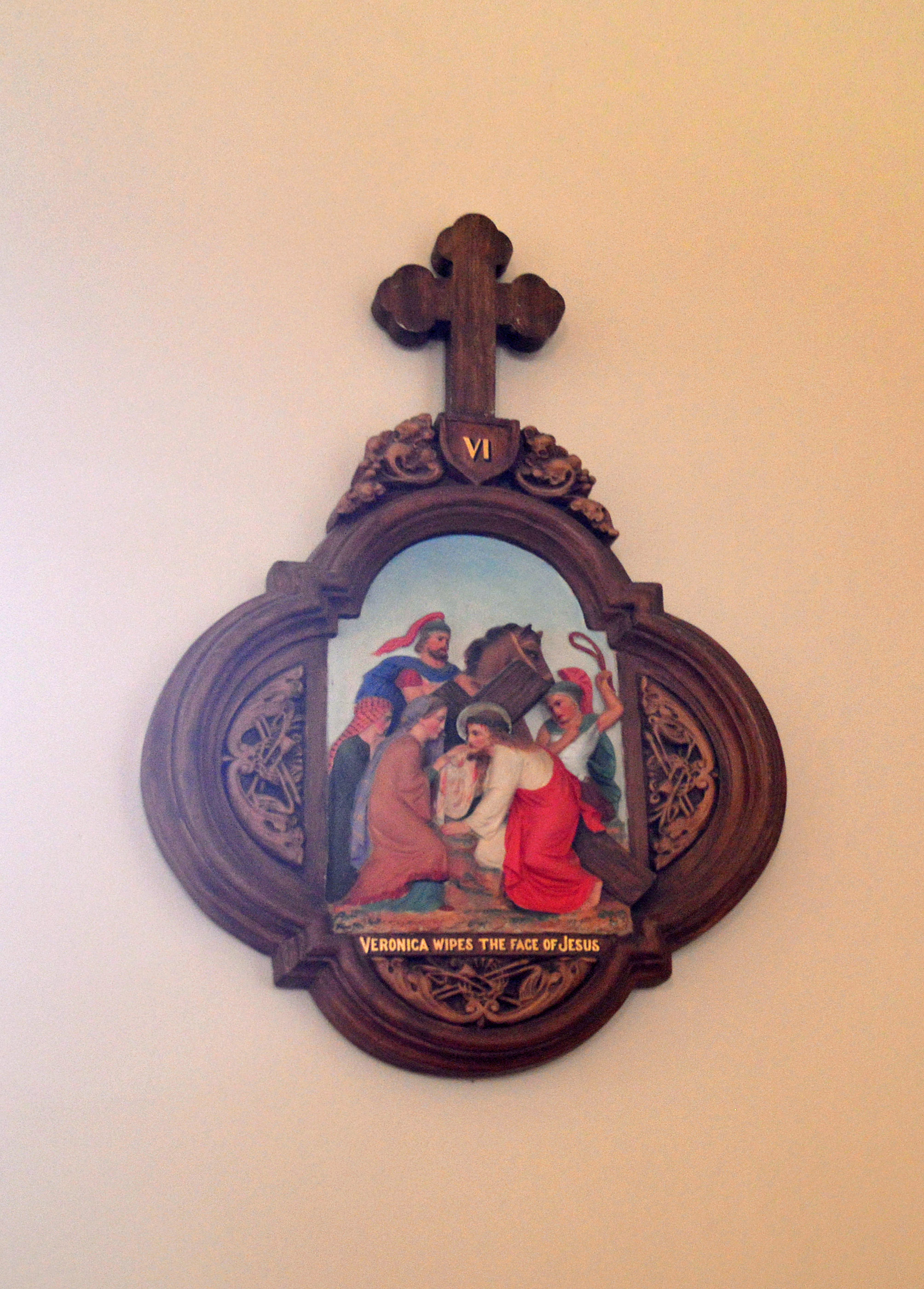
CONCLUSION
I hope you have enjoyed visiting the St Joan of Arc Catholic Church with me. I found it an attractive and interesting church.
I am happy to receive constructive comments or corrections concerning this website. The best websites are the ones which have no errors! I am grateful to my wife Margie who came to Victor Harbor with me, and who has proof-read these pages.
The Victor Harbor and Goolwa Catholic Parish has a website with link:
http://www.victorgoolwacatholic.org.au/
From here there is a further link to an excellent history by Patricia Williams:
http://victorgoolwahistory.weebly.com/victor.html
The photographs which appear on this site can also be found in higher resolution at:
https://www.flickr.com/photos/paulscottinfo/albums/
Site created 03 / 2017 ; reformatted 01 / 2021
Paul Scott

